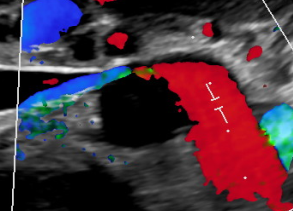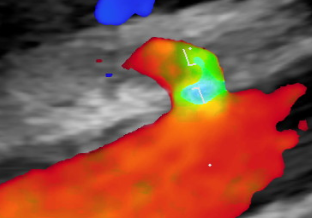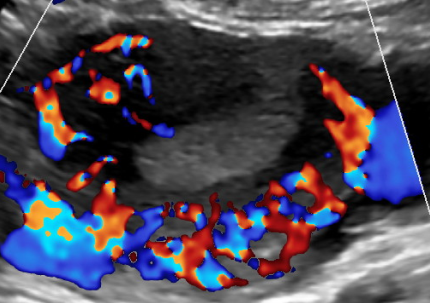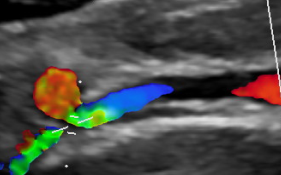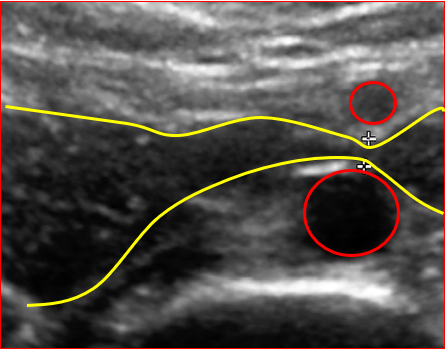- New stuff to read and discuss
- What patients say
- Clinic / online appointments
- Why the diagnosis of a psychosomatic illness is often a misdiagnosis
- Vascular Compression Syndromes
- Do you have questions?
- Checklist vascular compression syndromes
- Description of your symptoms
- Researchers from the Mayo Clinic confirm my concept of the Midline Congestion Syndrome
- Musculoskeletal pecularities of female puberty
- Lordosis /Swayback- Origin of many abdominal compression syndromes
- Nutcracker-Syndrome is a misnomer! Lordogenetic left renal vein compression is a more appropriate name!
- May-Thurner-constellation (May-Thurner-syndrome, Cockett’s syndrome)
- Midline (congestion) syndrome
- Pelvic congestion syndrome
- Celiac Trunk Compression / Dunbar syndrome / MALS / Arcuate ligament syndrome
- Wilkie-Syndrome / Superior-mesenteric-artery-syndrome
- Evlauation of vascular compressions with the PixelFlux-method
- Connective tissue disorders predispose to multiple compressions
- Postural tachycardia syndrome (POTS) – the hemodynamic consequence of vascular compression syndromes and loose connective tissue
- Restless legs-a little known symptom of abdominal vascular compression syndromes
- Pudendal neuralgia in vascular compression syndromes
- Migraine and Multiple Sclerosis
- Treatment of vascular compression syndromes
- Fatal errors in the treatment of vascular compression syndromes
- Risks of stents in venous compression syndromes
- Surgical treatment of abdominal compression syndromes: The significance of hypermobility‐related disorders
- Nutcracker and May-Thurner syndrome: Decompression by extra venous tube grafting and significance of hypermobility related disorders
- Our surgical treatment of vascular compressions
- Vascular compression syndromes I recently detected
- Detection of a new compression syndrome : Bilateral compression of the internal iliac vein between the psoas muscle and the internal iliac artery in a patient with chronic penile pain
- Diaphragmatic compression of the hepatic veins – a novel compression syndrome
- Post-prandial pain in the right upper abdomen due to a newly detected compression syndrome of the right renal vein
- A new sonographic sign of severe orthostatic venous pooling
- Gradually increasing, unbearable pain in the left flank only when standing or sitting – first description of a new compression syndrome
- A rare variant of Wilkie syndrome
- Kaleidoscope of instructive cases
- POTS – different from what you might think: an example
- Severe ataxia in a young woman with severe spinal congestion – complete resolution after decompression of the left renal vein
- Enigma resolved: vomiting during hip stretching
- Swollen bluish feet nausea unbearable epigastric and breast pain plus breathlessness
- Muscle cramps caused by a posture dependent pubic compression of the femoral artery
- Unbearable orthostatic pain in the autotransplanted left kidney
- Unbearable abdominal pain only while standing – easily diagnosed with PixelFlux
- Gradually increasing, unbearable pain in the left flank only when standing or sitting – first description of a new compression syndrome
- Abdominal pain due to liver compression in slipping rib syndrome in an EDS patient
- Genital and sexual symptoms of vascular compression syndromes – patient with ulcer of labia minora
- Posture dependent left flank / thoracic / lumbar pain – a new compression syndrome I recently detected
- Posture dependent unbearable breathlessness and fullness in the right upper abdomen due to a variable diaphragmatic compression of the hepatic veins and the vena cava inferior
- Migraines may develop in the wake of vascular compression syndromes
- Diaphragmatic compression of the liver veins with hepatic and intestinalis congestion
- Ultrasound Diagnostics
- Profile
- Functional colour Doppler ultrasound – how I do it
- Perfusion Measurement – PixelFlux-method
- Research
- Publications
- Nutcracker and May-Thurner syndrome: Decompression by extra venous tube grafting and significance of hypermobility related disorders
- Papers authored by Th. Scholbach
- Publications
- Inauguration of measurements of the tissue pulsatility index in renal transplants
- From nutcracker phenomenon to midline congestion syndrome and its treatment with aspirin
- First sonographic tissue perfusion measurement in renal transplants
- First sonographic bowel wall perfusion measurement in Crohn disease
- First sonographic renal tissue perfuison measurement
- First sonographic measurement of renal perfusion loss in diabetes mellitus
- PixelFlux measurements of renal tissue perfusion
- Why I prefer not to publish in journals but in the Internet
- Vessel stretching in nephroptosis – an important driver of complaints
- Publications
- Expertise
- Bornavirus Infection
- Scientific cooperation
- Cookie Policy
- Language:

- Cookie Policy (EU)

Checklist vascular compression syndromes
The symptoms listed below are typically found in patients with abdominal vascular compression syndromes. Albeit each symptom may have a variety of causes, it might be helpful to explain their relationship to vascular compressions. Click on the linked symptom to get a more detailed explanation.
In these, frequently chronic and severe symptoms, a functional, quantitative color duplex sonography applying the PixelFlux-technique should be considered to detect or rule out vascular compression syndromes:
Abdomen, Vegetative symptoms , Genitals , Pelvis, Thorax, Head, Back, Legs,
Abdomen
Chronic pain, especially in the upper abdomen, below the sternum
Flank pain – especially on the left side
Pain, increasing after a meal
Problems eating solid food
Sensation of food stuck inside the intestinal tract
Vomiting, belching, bilious vomiting
Changing symptoms when changing body position or posture
Irritable bowel symptoms: constipation alternating with diarrhea
Weakness of gastric and intestinal peristalsis
Enlarged stomach, sometimes extending below the belly button
Persistent nausea, especially when provoked by food intake
Inappetence (loss of appetite / early satiety despite inadequate intake of food )
Severe, unintentional weight loss
Hemorrhoids / intestinal bleeding (if unexplained after colonoscopy)
Severe gastro-esophageal reflux, if no improvement after gastroscopy and adequate treatment of the common causes occurs
Massive abdominal distension after a meal, bloating
Right-sided back pain after eating
pain in the right mid-abdomen after a meal
Vegetative symptoms
Nausea
Dizziness
Palpitations
Sudden, unexpected episodes of diarrhea
Blood pressure fluctuations
Fainting spells
blackouts
Sweats, especially after compressing the upper abdomen
Disturbed intestinal peristalsis
Anorexia
Nausea, belching
Weight loss
Daytime urgency
Headaches
Genitals
Pain during or after sexual intercourse – dyspareunia
swelling of the labia or sensation of swelling
unpleasant, frequent, odd, unmotivated sexual arousal
tingling, burning, numb sensations at the external genitals (often including the deep vagina)
Pain at the clitoris (in male glans penis correspondingly)
erectile dysfunction
protruding veins at the labia and inner upper thigh
severe / painful menstruation
massive menstrual blood losses
non-menstrual vaginal bleeding (sometimes even after hysterectomy)
bleeding after sexual intercourse (always see a gynaecologist to rule out cervical cancer!)
varicocele (enlarged veins around the testicles inside the scrotum)
increasing genital discomfort while sitting or standing for a certain time
Pelvis
Recurrent painful, burning micturation – after exclusion of an infection
Micro – or macrohematuria – otherwise unexplained
Pain
after only slight pressure on the lower abdomen
radiating into the genitals
in the perineal region
during bowel movements
when micturating
Unbearable pain below the navel, often right to the midline
Improvement of pain when crouching, curling up , when flexing the hips, when raising the legs while sitting or laying supine
Increased pain when standing, walking or during mental/emotional stress
Pain in the region of the appendix after exclusion of more common causes
Endometriosis pain that does not respond to treatment
Thorax
Thoracic pain: behind the sternum, in the region of the heart
Difficulties with breathing : inability to inhale deeply
Asthma, which does not respond to asthma therapy
Unexplained attacks of respiratory distress, which might have been classified to be asthma attacks
Sudden palpitations when the patient changes body position or after a meal
Postural tachycardia syndrome (POTS)
Blocked inspiration
Head
Preliminary note: severe and progressive symptoms should always be presented to a neurologist, ENT specialist, ophthalmologist and radiologist
Chronic headache in chronic abdominal pain
Obstructed nasal inspiration in the morning, which disappears after getting up
Nosebleeds of unknown cause
Migraine
Neck pain, pain that spreads from the neck over the entire skull
Dizziness of unknown cause
Back
Back pain, especially left sided
Scoliosis
Severe lordosis
Pulsating back pain
Legs
Weakness and paralysis of the legs – here, of course, primarily neurological and radiological diagnostics are mandatory
Swelling of the legs or feet – left-sided in the begining, later also on the right side
Varices, eft-sided in the begining, later also on the right side
Heaviness
Tingling, numbness – primarily neurological diagnostic mandatory
Thrombosis
Restless legs















